Have you ever considered the balance between your ‘gas’ and ‘brake’ muscles? Think about this: your quads power your speed, acting like a gas pedal, while your hamstrings function as brakes, slowing you down. But what happens if one is significantly stronger than the other? This imbalance, often seen after knee injuries like ACL tears or meniscus problems, can jeopardize knee stability, making you prone to further injury.
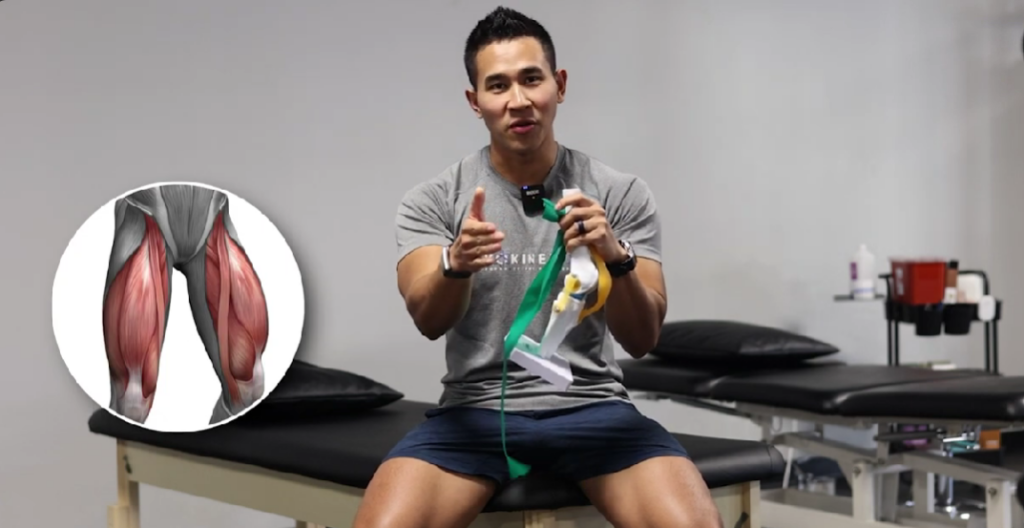
In this blog we will jump into the importance of hamstring strength and explore exercises to ensure both your ‘gas’ and ‘brake’ muscles are in sync, keeping you injury-free and excelling in sports for the long haul.
Proper Deadlift Technique
Deadlifts are essential for building leg strength and enhancing athletic performance, targeting key muscles like the quads and hamstrings. There are two primary types: the Regular deadlift and the Romanian deadlift (RDL).
The regular deadlift engages both the hamstrings and quads by bending your hips and knees, while the RDL focuses more on the hamstrings and glutes.
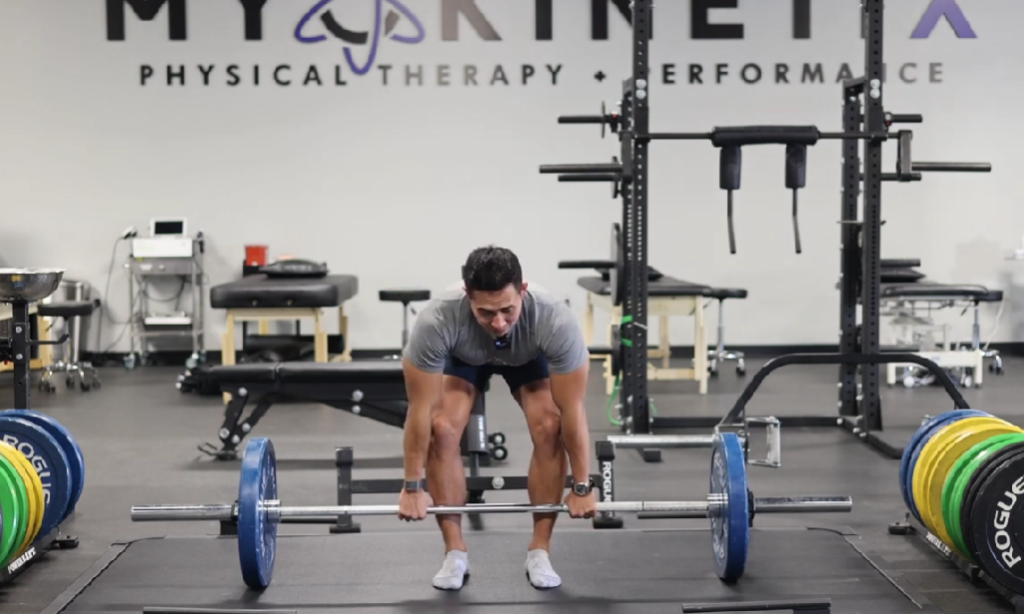
For an effective deadlift, start by bending at the hips and slightly at the knees, ensuring your knees don’t surpass the bar. Instead of simply lifting the weight, concentrate on pushing through the ground to lift using the correct muscles.
Focus on executing these exercises slowly and smoothly, maintaining proper breathing techniques. If you’re recovering from a knee injury like a torn ACL or meniscus issue, aim for more repetitions (around 8 to 15) and consider performing 3 to 5 sets. This approach can assist in muscle growth and aid in recovery. Mastering the correct deadlift technique helps strengthen both the quads and hamstrings, enhancing sports performance and providing vital knee stability, especially during recovery from an injury.
Romanian Deadlift
The Romanian Deadlift (RDL) effectively targets your hamstrings and glutes by focusing on the hip hinge movement. Unlike a regular deadlift, the RDL involves keeping your knees slightly bent and emphasizing the hinge, leading to increased hamstring engagement. It’s essential for hip extension, a vital aspect of athletic movements like jumping or landing. Elevating your front foot helps maximize this exercise by enforcing a deeper hinge and loading the hamstrings further.
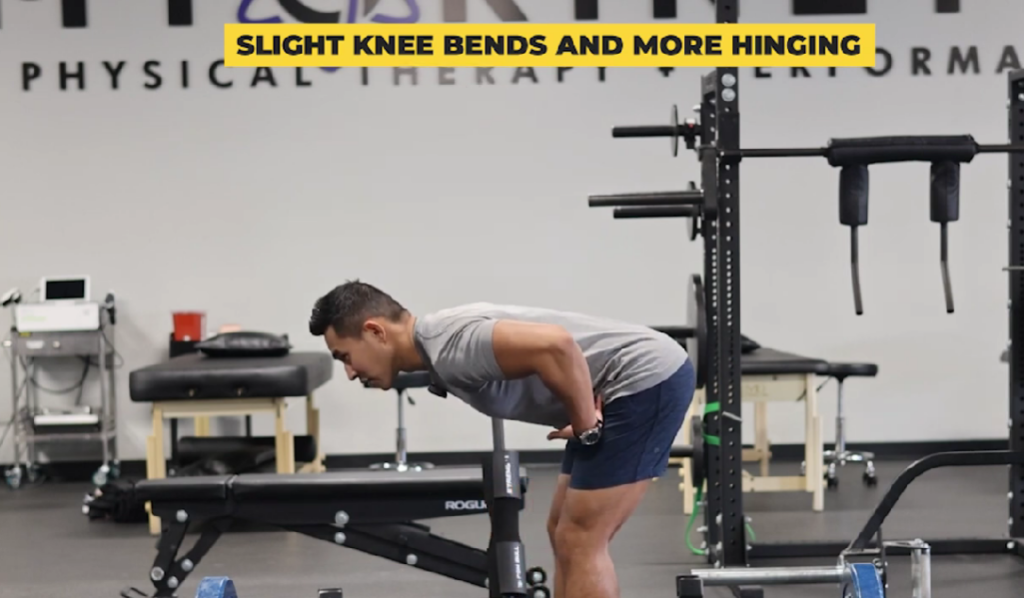
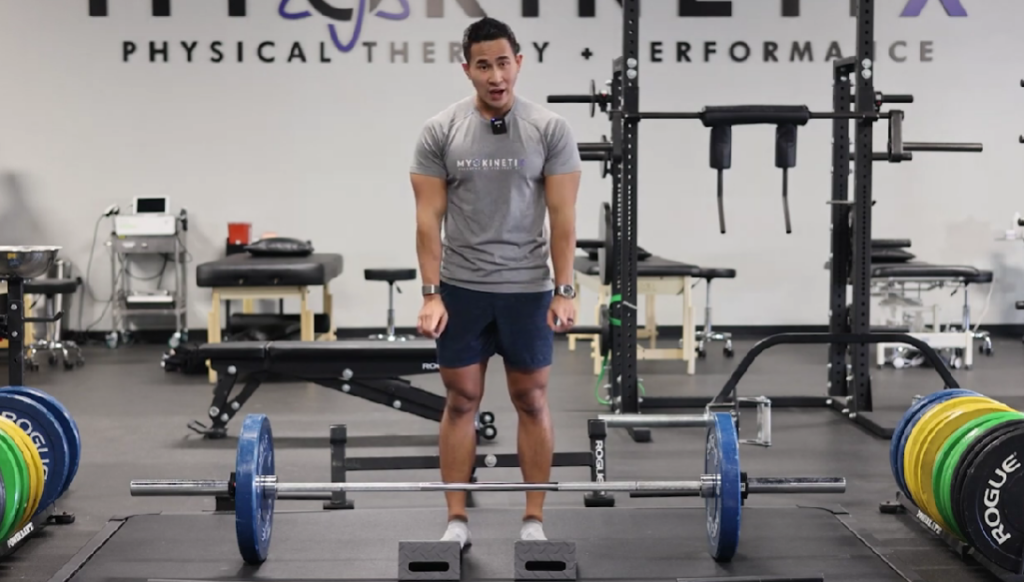
- Setup: Stand with feet shoulder-width apart. Put the barbell in front of you, close to your shins. Hold the bar with an overhand grip, hands shoulder-width apart, and keep your back straight.
- Movement: Bend your knees a little and push your hips back while keeping your back straight. Lower the barbell slowly, feeling your hamstrings stretch. Focus on this hip movement without rounding your back too much.
- Lift and Return: Push through your heels to lift the bar back up. Engage your hamstrings, glutes, and hips. Keep it slow and controlled. Do 8 to 12 reps for 3 to 4 sets. Breathe steadily and focus on squeezing your hamstrings throughout the movement for the best results.
Remember, prioritize proper form and controlled movements over heavy weights. Incorporate the RDL into your workout routine as an accessory exercise, ideally after your primary lifts, to maximize its benefits for hamstring development and overall lower body strength.
Slider Exercises for Hamstring
Slider exercises for hamstrings are an incredibly effective way to challenge and lengthen your hamstring muscles, vital for enhancing athletic performance. All you need is a slider or even a towel on a hardwood floor to get started. This exercise focuses on engaging and extending your hamstrings while keeping your lower back tucked and your hips elevated.
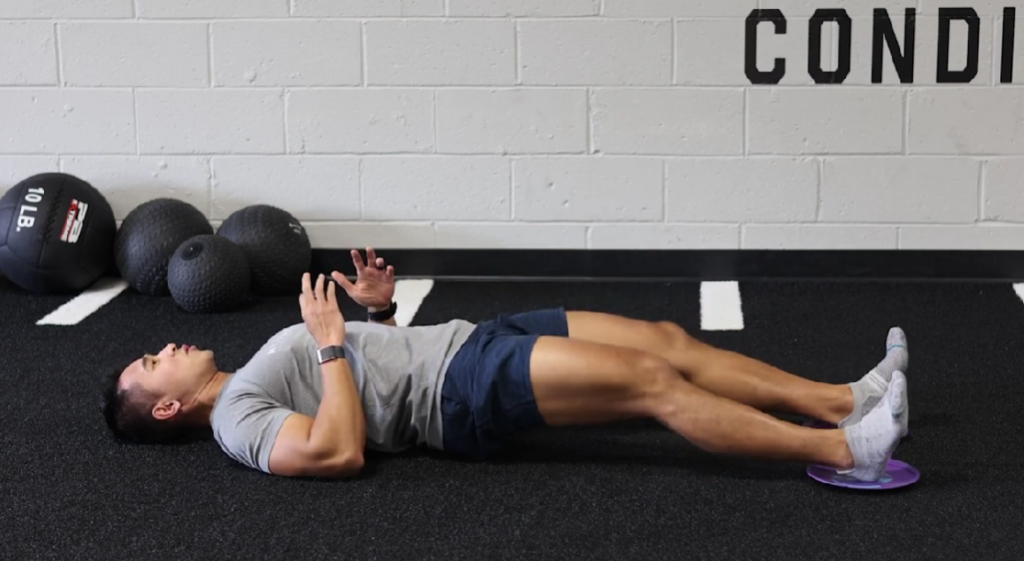
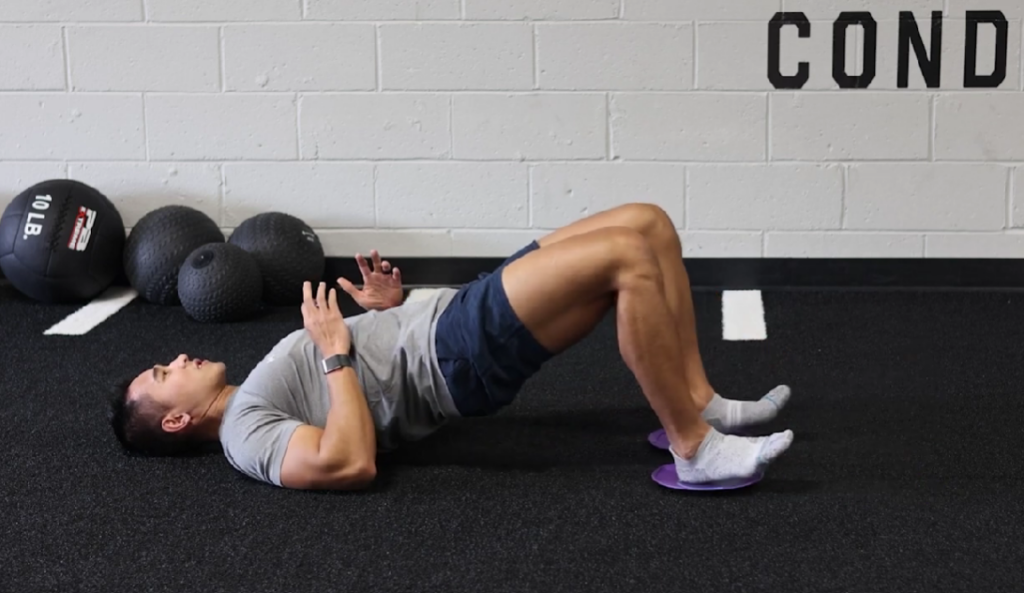
- Setup: Lie on your back with sliders under your feet (or towels if on hardwood). Lift your hips, engaging your core.
- Movement: Keep your hips up and slowly slide your legs outward. Focus on controlling the movement and feeling the stretch in your hamstrings.
- Return: Without dropping your hips, smoothly pull the sliders back in using your hamstrings. Keep your lower back tucked throughout.
- Repetition and Sets: Do this exercise slowly, aiming for 8 to 15 reps per set. Try for 3 to 4 sets in total. Focus on maintaining good form and feeling your hamstrings work. It might be tough, but it’s fantastic for hamstring strength and flexibility, important for overall athleticism.
Advanced Single Leg RDLs
The Advanced Single Leg RDL is an exceptional exercise, crucial for athletic performance and everyday movements involving unilateral stability. This exercise mimics movements essential for sports, running, and any activity requiring balance on one leg. Similar to a deadlift setup, this exercise focuses on the hinge movement but is executed on one leg, emphasizing the hip extension vital for running and sprinting. The focus here is on mastering the movement pattern, emphasizing controlled weight and form to reap the benefits of enhanced unilateral stability and functional strength.
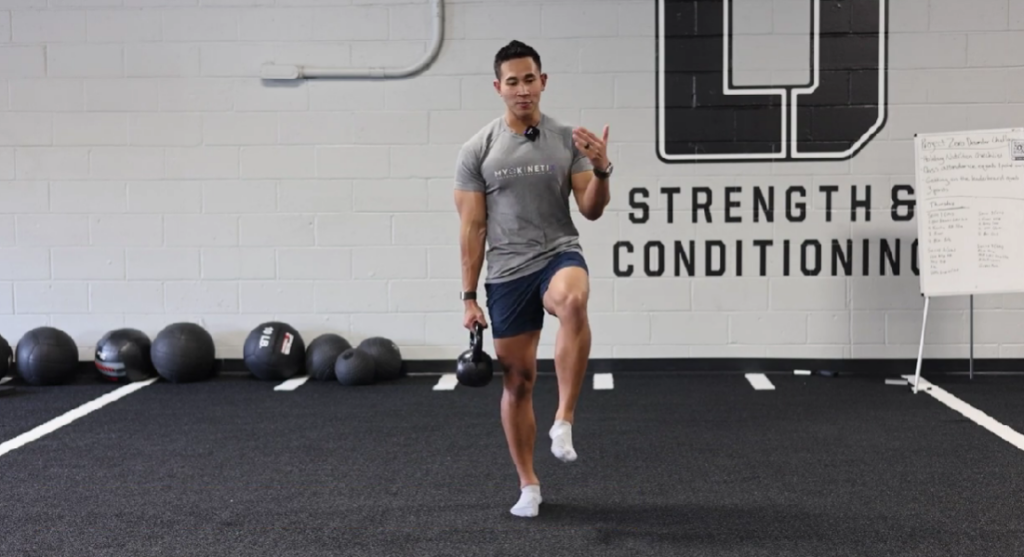
- Setup: Stand on one leg, slightly bending the knee for balance. Keep your back straight and your other leg extended behind you.
- Movement: Lean forward while keeping your balancing leg slightly bent. Lower your torso while extending the non-supporting leg behind you, creating a straight line from your head to the extended leg.
- Return: Use your butt and hamstrings to stand tall, bringing your extended leg forward. Focus on straightening your hips as you stand upright. Keep your balance throughout.
- Repetition and Sets: Do this exercise slowly and steadily. Aim for 8 to 10 reps on each leg for each set. Try doing 4 to 5 sets in your workout routine. Focus on balance and try increasing the challenge as you get more comfortable. This exercise is great for improving balance and strength in one leg, essential for various activities.
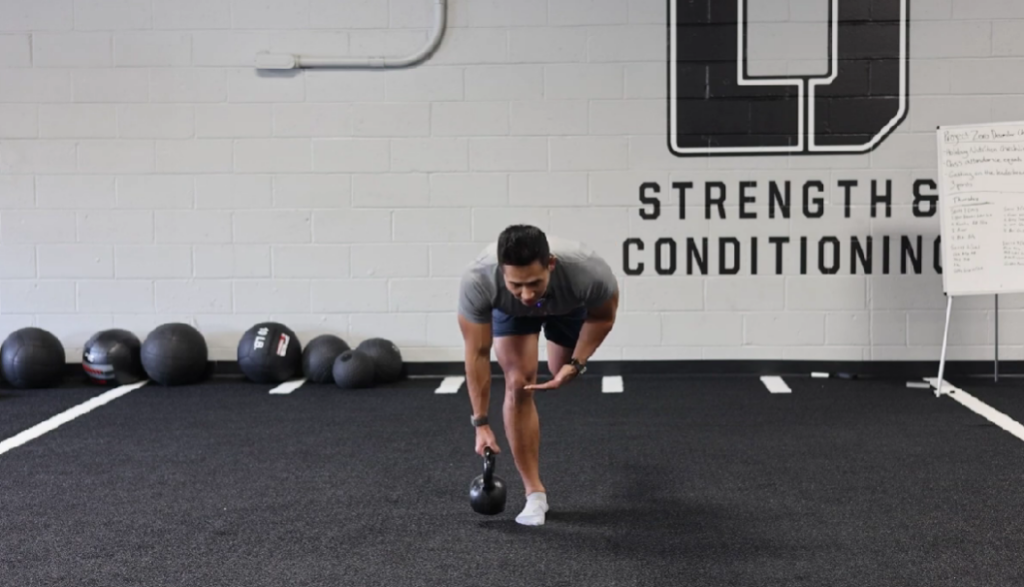
Glute Ham Raises
The next exercise is the Glute Ham Raise, a renowned exercise for hamstring development and control, essential for athletic performance and overall leg strength. Often seen on social media, this exercise targets the hamstrings effectively, aiding in better hamstring control and strength.
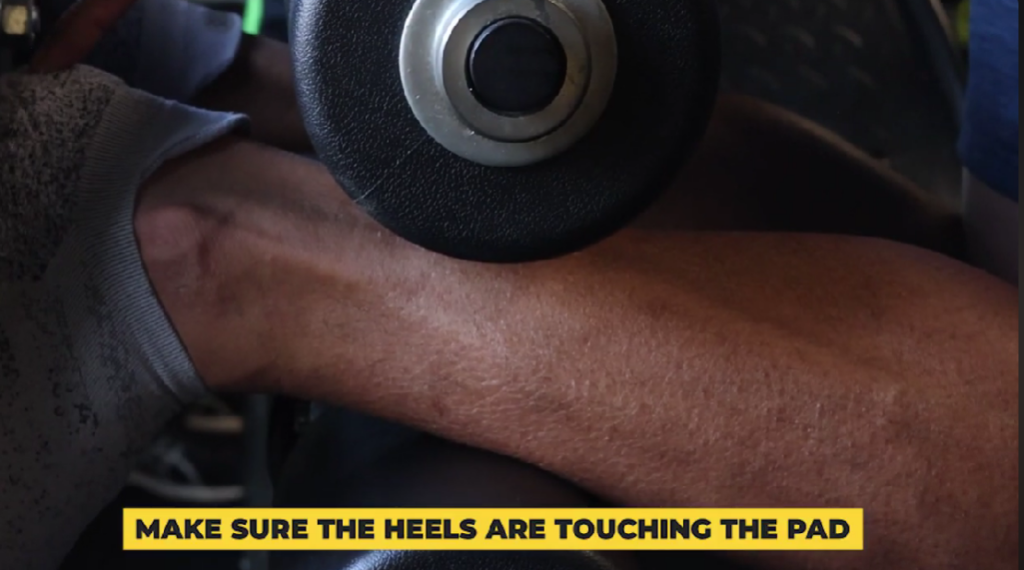
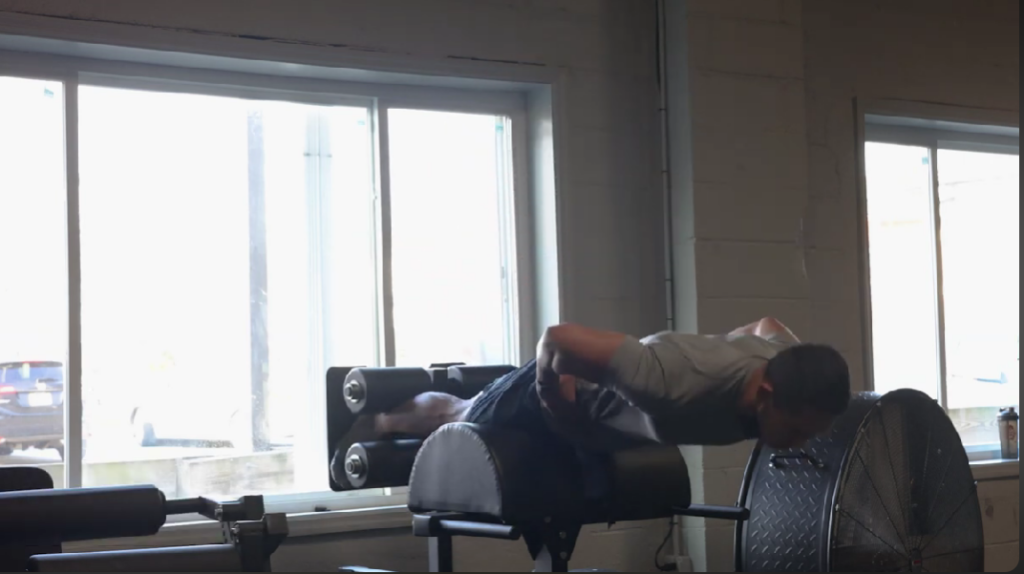
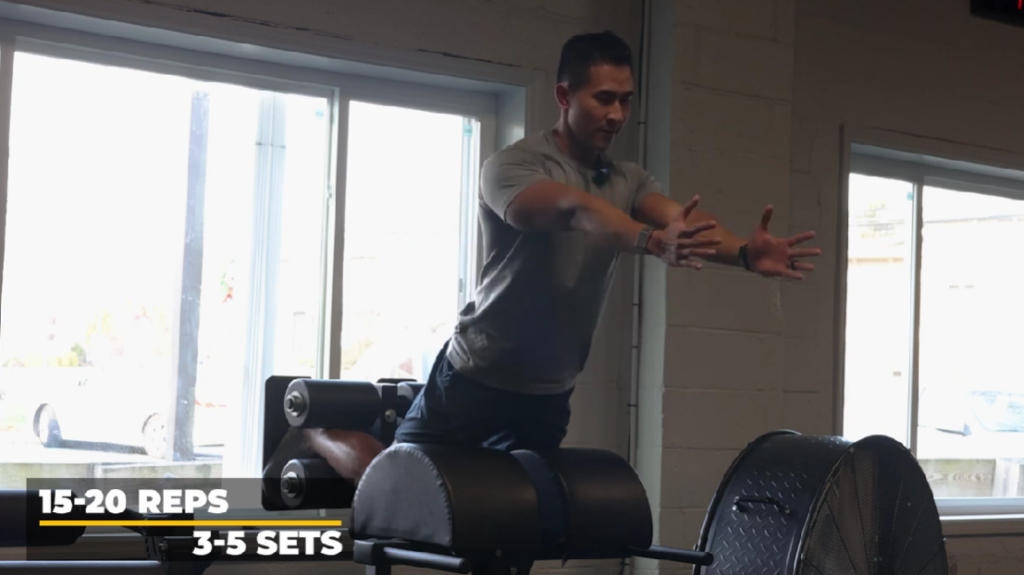
- Setup: Sit on the glute ham raise machine with your heels pressed against the pad. Squeeze your butt and core muscles for stability.
- Reaching Movement: Lean forward slightly and feel your hamstrings engage. Reach forward while keeping tension in your hamstrings and hips. Go back to the starting position. Do this 15 to 20 times in 3 to 5 sets.
- Controlled Descent with Arm Help: Try lowering yourself using your arms. Start like the reaching movement but slowly go down, using your arms to control it. Use your arms to come back up, focusing on using your hamstrings. Aim for 8 to 12 reps in 3 to 4 sets.
- Focus on Form: Keep your attention on squeezing your hamstrings throughout. Try to do this exercise more independently as you get better, focusing on your hamstrings for strength and control.
Open Chain Hamstring Curl
This is a classic yet effective exercise targeting the distal hamstring muscles, crucial for knee stability and lower body strength. This exercise can be performed either lying down or seated, both beneficial for isolating and strengthening the hamstring muscles close to the knee joint. Utilize this exercise towards the end of your workout as a burnout or drop set to thoroughly engage and fatigue your hamstrings, ensuring an intense workout.


- Setup: Sit or lie on the machine, making sure the pad is on your lower legs, and your toes are pointing up.
- Movement: Use your hamstrings to slowly pull the weight up by bending your knees. Try to bring the pad closer to your buttocks. Do this smoothly and with control, really feeling your hamstrings work.
- Returning and Reps: Slowly go back to the starting position, resisting the weight. This is one rep. Keep your movements smooth and avoid going too fast. Aim for 8 to 15 reps in each set to challenge yourself while keeping good form.
- Volume and Weights: Focus more on doing the exercise right rather than using heavy weights. Aim for 3 to 5 sets, adjusting the weight to keep the right form and challenge your muscles. Keep your hamstrings tight during the whole exercise for the best results.
Check out this video with Dr Natty to learn more.
These strengthening hamstring exercises have been a cornerstone in our approach to rehabilitating athletes and individuals aiming to return to competitive sports. Strengthening the hamstring muscles is crucial for anyone looking to re-engage in sports or elevate their performance levels. These exercises aren’t solely for athletes; they’re invaluable for individuals seeking to enhance their overall leg strength and stability, ensuring better functionality in daily activities and reducing the risk of injury. Consistency with these exercises aids not only in the development of hamstring strength but also in fortifying knee stability, crucial for athletic endeavors or active lifestyles.
At Myokinetix, our mission revolves around your well-being and vitality. We’re committed to supporting your recovery journey from any injury, aiming not just for healing but also for ensuring your muscles are resilient and robust to prevent future injuries. Our dedicated team of healthcare experts is devoted to providing you with top-tier care, tailored to your specific needs. We’re here to empower you to live an active, unrestrained life, where your wellness and physical well-being are at the forefront of our focus.
CONTACT US TODAY at 973-281-4936 to learn more or schedule a time to talk with our patient development coordinator here.
